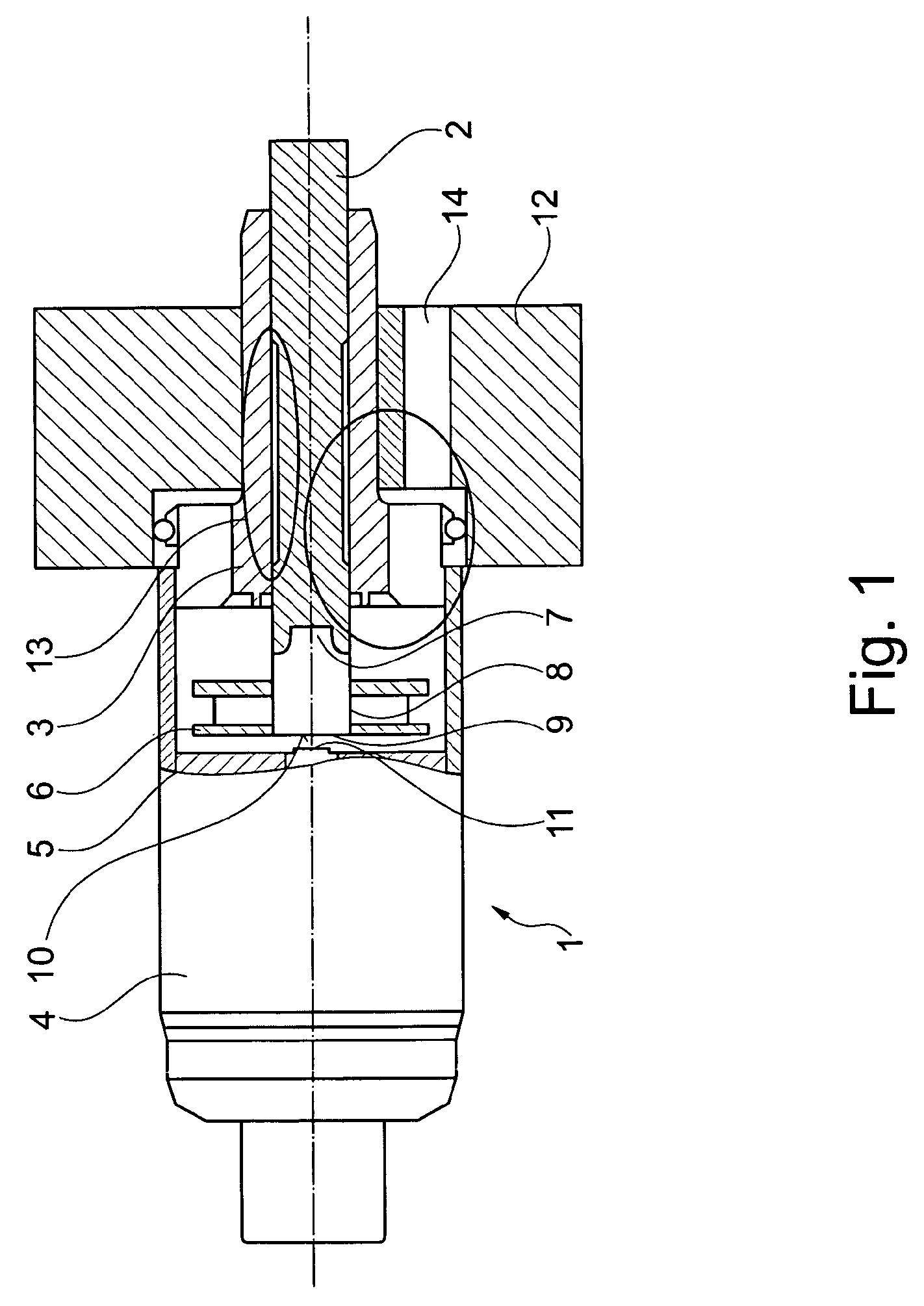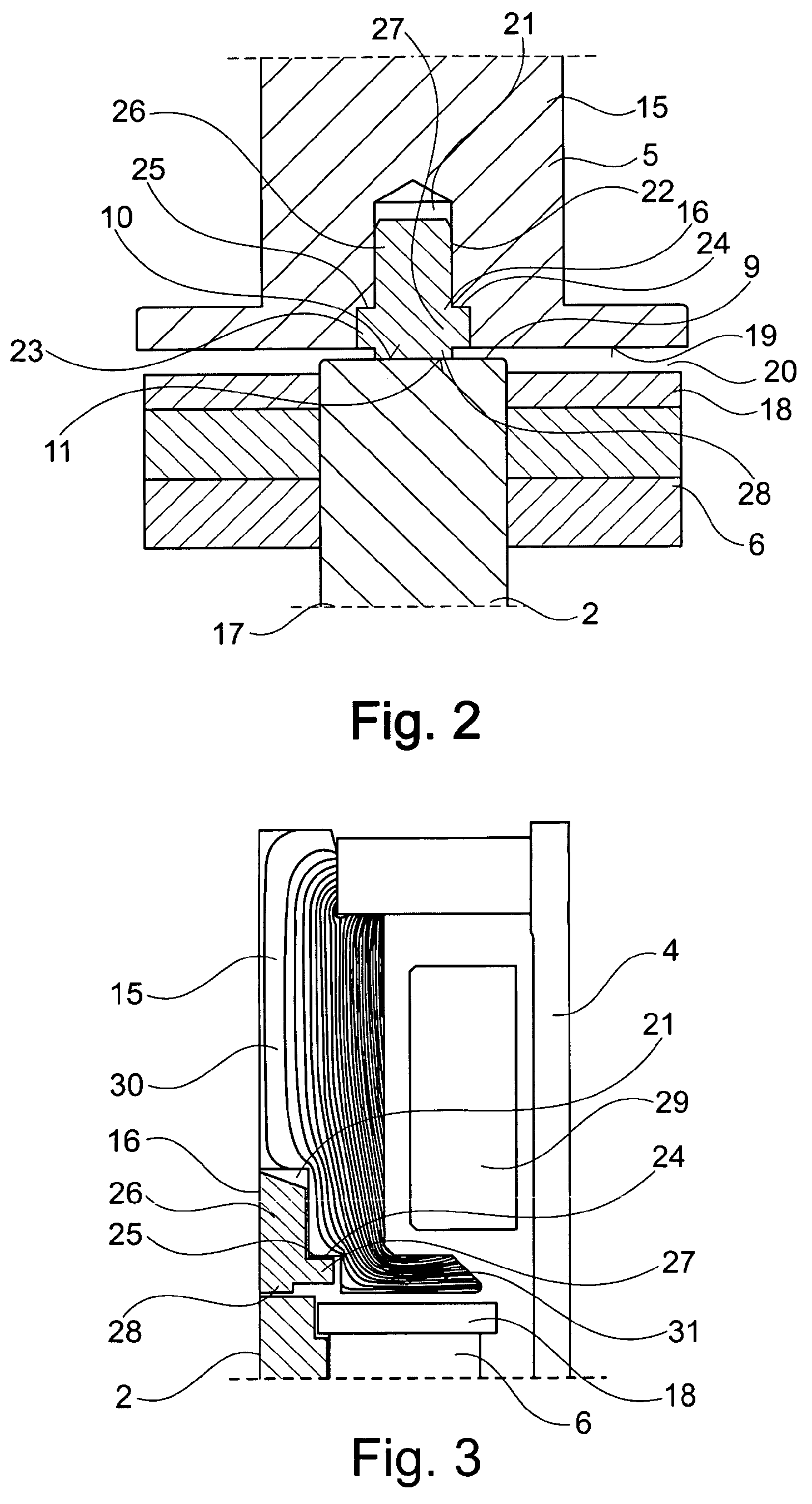Electromagnetic actuating device and camshaft adjuster
a technology of electromagnetic actuation and camshaft, which is applied in the direction of non-mechanical valves, magnetic bodies, valve drives, etc., can solve the problems of electromagnetic actuation devices being incapable of functioning and extreme poor efficiency, and achieves low adhesion forces, small contact surface, and minimal switching time
- Summary
- Abstract
- Description
- Claims
- Application Information
AI Technical Summary
Benefits of technology
Problems solved by technology
Method used
Image
Examples
Embodiment Construction
[0029]In the figures, identical elements and elements with the same function are marked by the same reference numbers.
[0030]FIG. 1 shows the realization of an electromagnetic actuating device for a camshaft adjustment device which is otherwise not illustrated in further detail. A possible variant configuration of the combination of core region and armature is illustrated in FIGS. 2 and 3.
[0031]The camshaft, which is not illustrated, is actuated directly or indirectly with the aid of a continuously elongated, bolt-shaped actuating member 2, which in addition to permanent magnet means 6, which are to be further explained later, is a component part of the armature. The actuating member 2 is guided adjustably in axial direction in a sleeve-shaped bearing element 3, which undertakes at the same time the function of a magnetic yoke. The electromagnetic actuating device 1 comprises, within a cup-shaped housing 4, a coil device, known per se, not illustrated in FIG. 1, to which a magnetic c...
PUM
| Property | Measurement | Unit |
|---|---|---|
| temperature | aaaaa | aaaaa |
| diameter | aaaaa | aaaaa |
| diameter | aaaaa | aaaaa |
Abstract
Description
Claims
Application Information
 Login to View More
Login to View More - R&D
- Intellectual Property
- Life Sciences
- Materials
- Tech Scout
- Unparalleled Data Quality
- Higher Quality Content
- 60% Fewer Hallucinations
Browse by: Latest US Patents, China's latest patents, Technical Efficacy Thesaurus, Application Domain, Technology Topic, Popular Technical Reports.
© 2025 PatSnap. All rights reserved.Legal|Privacy policy|Modern Slavery Act Transparency Statement|Sitemap|About US| Contact US: help@patsnap.com



